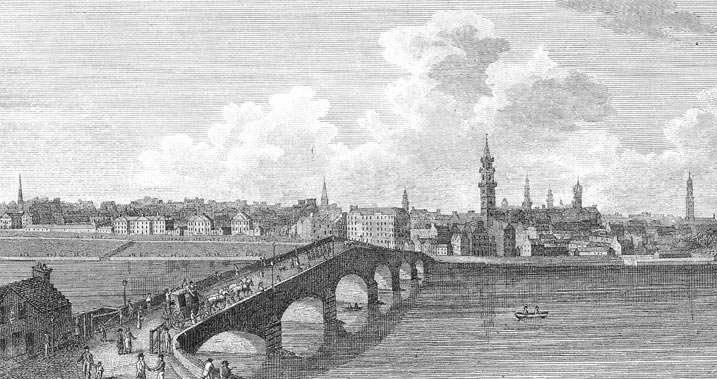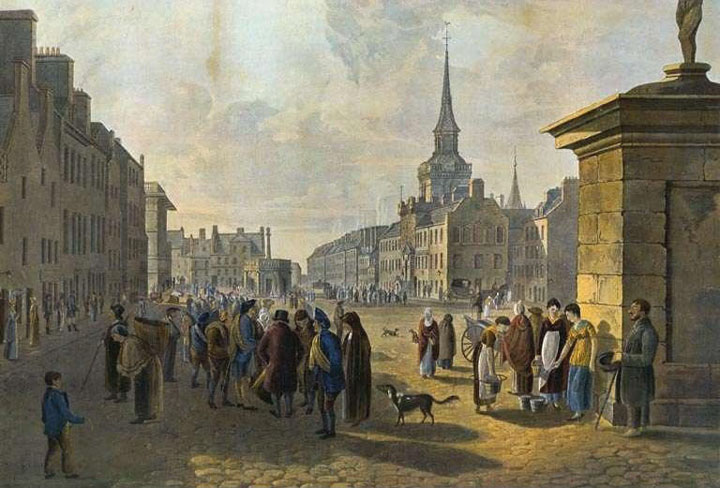During the mediaeval period a large number of towns were created in Scotland. However small, these were distinct units, either self-governing royal burghs, or burghs of barony, controlled by a landowner. The first 30 royal burghs date from the 12th century, and include Aberdeen, Berwick, Crail, Dumfries, Dundee, Dunfermline, Edinburgh, Elgin, Forfar, Haddington, Inverness, Jedburgh, Lanark, Linlithgow, Montrose, Peebles, Perth, Renfrew and Stirling. Another nine were created in the thirteenth century, then the rate slowed down further until another batch in the sixteenth century. Burghs of barony followed a similar pattern.

Engraving of
Glasgow from the south, from The History of the City of Glasgow and
Suburbs, by James Denholm, published in 1797.
© SCRAN/Glasgow
City Libraries
By 1707 there were about 80 royal burghs and about the same number of
active burghs of barony, though there were other minor or unsuccessful
ones. Towns respond to economic and social change at different periods,
and some grow while others stagnate or change direction. By the eighteenth
century some burghs had grown rich and powerful, while others were doing
less well, and a few, such as Kincardine and Roxburgh, had completely
disappeared. Some
towns, such as Dalkeith and Hamilton, evolved specific functions as satellites
of nearby cities.

Painting of
Aberdeen by Alexander Nasmyth (1758-1840), c.1800, looking west along
the High Street.
©
SCRAN/Aberdeen Art Gallery
This virtual tour describes some of the changes which took place in small and medium sized towns in Scotland during the long eighteenth century, from around 1707 to the 1820s. These changes are illustrated by the surviving architecture, by objects from museum collections, and by documents, paintings and engravings. Rather than a physical tour of any one town, these pages offer a selection of images from the SCRAN database to illustrate points which can be applied to many Scottish towns, and to highlight the value of visual evidence to the historian. There are some topics, such as public services, which have hardly been touched on. The aim is not to be comprehensive but to provoke thought, and to stimulate interest and further research.